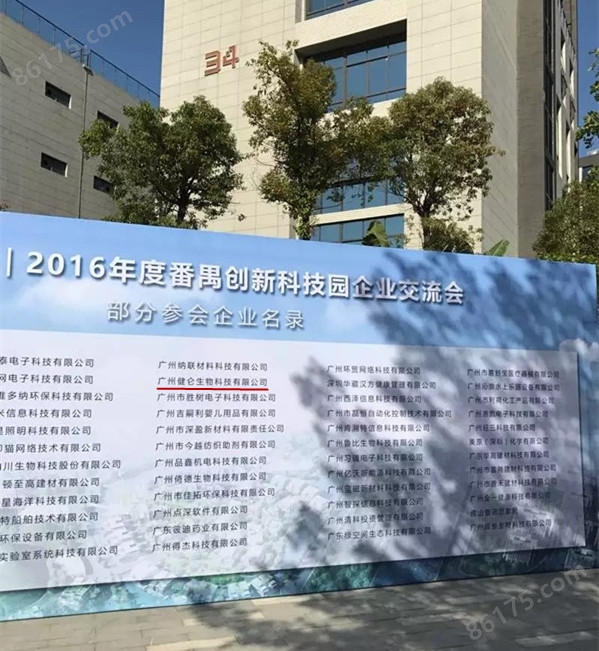請(qǐng)輸入產(chǎn)品關(guān)鍵字:
郵編:510660
聯(lián)系人:楊永漢
電話(huà):86-020-82574011
傳真:86-020-32206070
手機(jī):13802525278
留言:發(fā)送留言
個(gè)性化:www.jianlun45.com
網(wǎng)址:www.jianlun.com
商鋪:http://www.mcstair.com/st199246/
斑疹傷寒立克次氏體IgG免疫熒光試劑盒
【產(chǎn)品簡(jiǎn)介】
【詳細(xì)說(shuō)明】
斑疹傷寒立克次氏體IgG免疫熒光試劑盒
Rickettsia prowazekii IgG IFA Kit
廣州健侖生物科技有限公司
主要用途:用于檢測(cè)人血清中的斑疹傷寒立克次氏體 IgG 抗體
產(chǎn)品規(guī)格:12 孔/張,10 張/盒
主要產(chǎn)品包括:包柔氏螺旋體菌、布魯氏菌、貝納特氏立克次體、土倫桿菌、鉤端螺旋體、新型立克次體、恙蟲(chóng)病、立克次體、果氏巴貝西蟲(chóng)、馬焦蟲(chóng)、牛焦蟲(chóng)、利什曼蟲(chóng)、新包蟲(chóng)、弓形蟲(chóng)、貓流感病毒、貓冠狀病毒、貓皰疹病毒、犬瘟病毒、犬細(xì)小病毒等病原微生物的 IFA、MIF、ELISA試劑。
斑疹傷寒立克次氏體IgG免疫熒光試劑盒
我司還提供其它進(jìn)口或國(guó)產(chǎn)試劑盒:登革熱、瘧疾、西尼羅河、立克次體、無(wú)形體、蜱蟲(chóng)、恙蟲(chóng)、利什曼原蟲(chóng)、RK39、漢坦病毒、深林腦炎、流感、A鏈球菌、合胞病毒、腮病毒、乙腦、寨卡、黃熱病、基孔肯雅熱、克錐蟲(chóng)病、違禁品濫用、肺炎球菌、軍團(tuán)菌、化妝品檢測(cè)、食品安全檢測(cè)等試劑盒以及日本生研細(xì)菌分型診斷血清、德國(guó)SiFin診斷血清、丹麥SSI診斷血清等產(chǎn)品。
歡迎咨詢(xún)
歡迎咨詢(xún)2042552662

二維碼掃一掃
【公司名稱(chēng)】 廣州健侖生物科技有限公司
【】 楊永漢
【】
【騰訊 】 2042552662
【公司地址】 廣州清華科技園創(chuàng)新基地番禺石樓鎮(zhèn)創(chuàng)啟路63號(hào)二期2幢101-3室
【企業(yè)文化】


發(fā)表于2014年9月16日的《eLife》的新研究中,紐約大學(xué)朗格尼醫(yī)學(xué)中心和其他地方的科學(xué)家*報(bào)告了,一種叫做翻譯延伸因子eEF1A1的蛋白掌管了熱休克反應(yīng)的整個(gè)過(guò)程。通過(guò)這樣做,eEF1A1支持細(xì)胞內(nèi)的總蛋白的動(dòng)態(tài)平衡,確保其在各種內(nèi)部和外部的壓力條件下正常運(yùn)轉(zhuǎn)。研究人員表明,這項(xiàng)發(fā)現(xiàn)有可能揭示一個(gè)有前途的、新的用于神經(jīng)退行性疾病和癌癥的藥物靶標(biāo)。
研究人員說(shuō),多種老年性疾病茁壯成長(zhǎng),取決于細(xì)胞如何對(duì)高溫和其他的壓力作出反應(yīng)。熱休克蛋白(HSP)作為其他蛋白質(zhì)的分子伴侶,幫助它們正確折疊以及支持它們運(yùn)作。在神經(jīng)退行性疾病中,雖然神經(jīng)元缺乏但足以保護(hù)HSP,將它們與蛋白質(zhì)的破壞應(yīng)力隔離開(kāi)。大多數(shù)神經(jīng)退行性疾病的特點(diǎn)是蛋白質(zhì)錯(cuò)誤折疊。如果熱休克反應(yīng)可以在老化神經(jīng)元中使其功能全面恢復(fù),那么錯(cuò)誤折疊的蛋白質(zhì)可以正確折疊,這有可能避免或阻止疾病的進(jìn)展,如阿爾茨海默氏癥,帕金森氏,或肌抗原抗體性側(cè)索硬化癥(ALS)。與此相反,許多類(lèi)型的癌細(xì)胞依靠HSP來(lái)存活。因?yàn)楦咚降臒嵝菘说鞍啄軌騿?dòng)癌細(xì)胞生長(zhǎng)和增殖,消耗這些細(xì)胞的熱休克蛋白,有可能使腫瘤對(duì)化療和放射療法變得敏感。
“這可能有點(diǎn)言之過(guò)早,但我們認(rèn)為,我們zui終可以開(kāi)發(fā)出一種小分子激活劑和抑制劑來(lái)調(diào)整熱休克反應(yīng),”這項(xiàng)研究的*研究員Evgeny Nudler博士說(shuō)。紐約大學(xué)朗格尼醫(yī)學(xué)中心的生物化學(xué)與分子藥理學(xué)教授朱莉·威爾遜·安德森教授說(shuō):“eEF1A1同時(shí)控制熱休克反應(yīng)的每一個(gè)步驟。”
In a new study, "eLife," published September 16, 2014, scientists at New York University's Langley Medical Center and elsewhere first reported that a protein called the translation elongation factor eEF1A1 governs the entire course of the heat shock response . By doing so, eEF1A1 supports the homeostasis of total protein in the cell and ensures its normal operation under a variety of internal and external stress conditions. Researchers have shown that the discovery is likely to reveal a promising new drug target for neurodegenerative diseases and cancer.
The researchers say that a variety of aging diseases thrive on how cells respond to high temperatures and other stresses. Heat shock proteins (HSPs) act as chaperones to other proteins, helping them to properly fold and support their functioning. In neurodegenerative diseases, neurons are deficient but sufficient to protect HSPs from their destructive stress on proteins. Most neurodegenerative diseases are characterized by protein misfolding. If the heat shock response fully regains its function in aged neurons, misfolded proteins can fold properly, potentially avoiding or preventing disease progression such as Alzheimer's disease, Parkinson's disease, or myogenic antigens Antibody lateral sclerosis (ALS). In contrast, many types of cancer cells rely on HSPs to survive. Because high levels of heat shock proteins can initiate cancer cell growth and proliferation, depleting the heat shock proteins in these cells may make the tumor susceptible to chemotherapy and radiotherapy.
"It may be a bit too early, but we think we could eventually develop a small molecule activator and inhibitor to modulate the heat shock response," said Evgeny Nudler, MD, a senior researcher with the study. Professor Julie Wilson Anderson, a professor of biochemistry and molecular pharmacology at the Lanington Medical Center at New York University, said: "eEF1A1 simultaneously controls every step of the heat shock response."

會(huì)員.png)
 QQ交談
QQ交談 MSN交談
MSN交談
